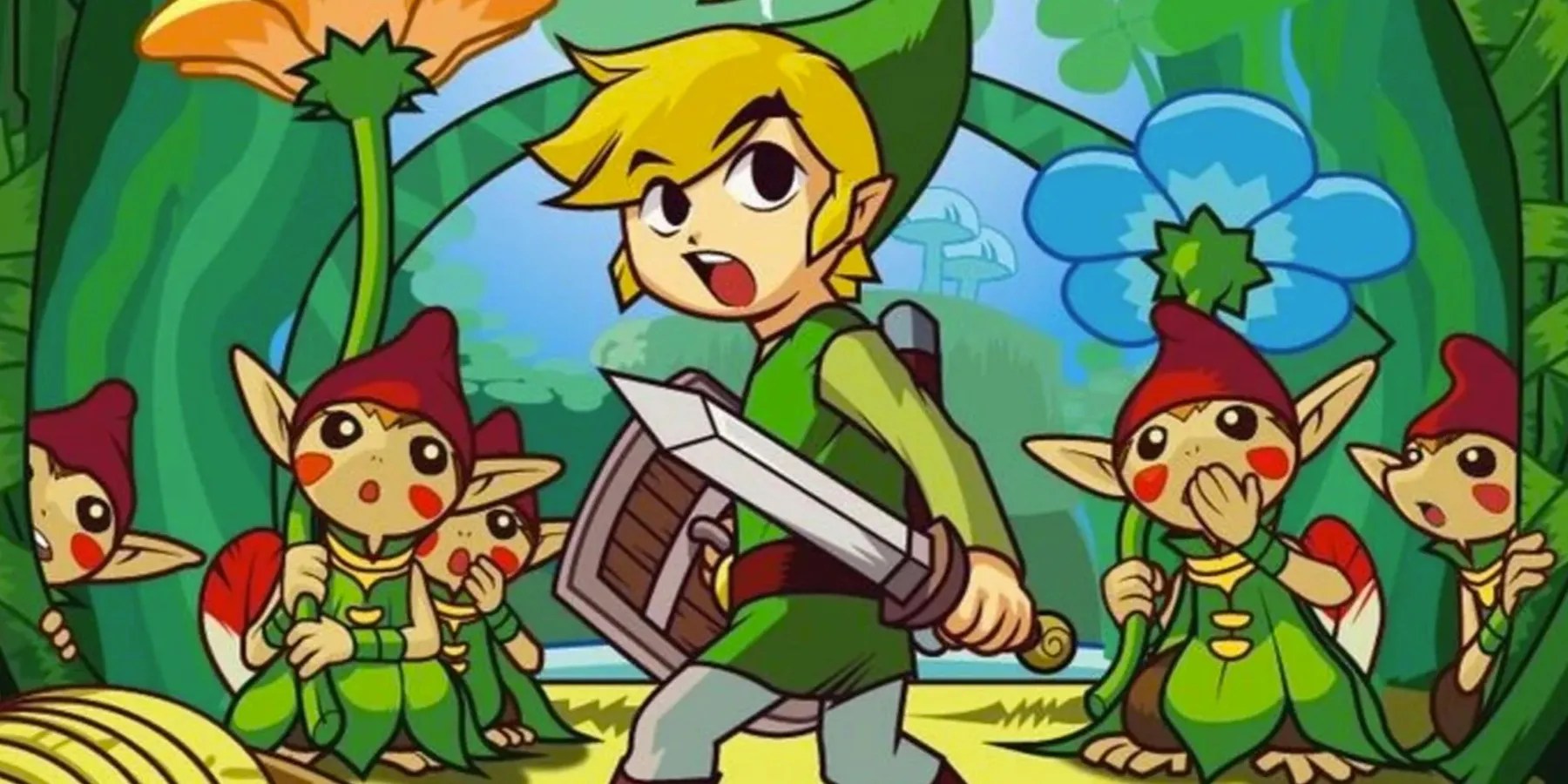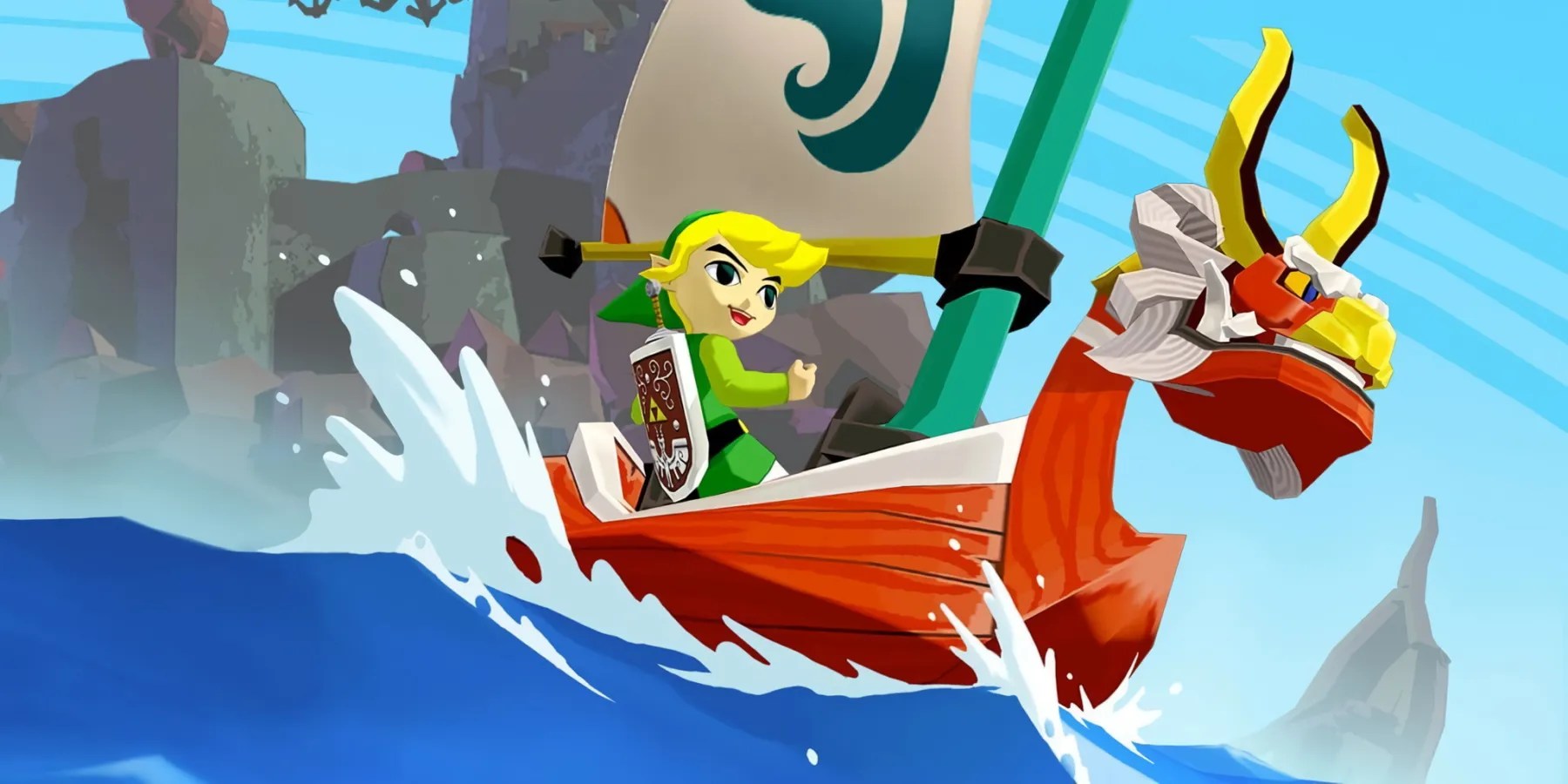Summary
The Legend of Zeldais one of Nintendo’s most popular video game franchises, making appearances on every console released by the company. While someZeldagames are grouped with the greatest video games of all time, likeOcarina of TimeandBreath of the Wild, others are underrated by both the video game industry, and even the series' most loyal fans.
From forgotten spin-off titles to mainline entries on obsolete consoles, these tenZeldagames deserve a lot more respect from fans who may overlook them in favor of more popular titles. They might not be the most definitiveZeldaexperiences, but they’re definitely better than most gamers give them credit for.

Back in the early 2000s, it was clear Nintendo wanted tocapitalize on their success withPokemonby releasing twoZeldagames simultaneously:Oracle of AgesandOracle of Seasons. The top-down GameBoy Color titles differ fromPokemonin one key way: the games' storylines are interconnected, meaning players have to complete them both for the full narrative.
Oracle of AgesandOracle of Seasonscan be played in any order to unlock the connected ending, though some fans were alienated by the differences between them, withAgescentered on puzzle-solving whileSeasonsprioritized combat. Thankfully, players can replay these classic GameBoy titles on the Nintendo Switch Online library, which is the best way to enjoy its throwback graphics.

There was a lot of anticipation for the release ofSkyward Swordin 2011, from its promise of taking place at the very beginning of the heavily-debatedLegend of Zeldatimeline, to its integration of the Wii’s motion controls to allow players to swing the Master Sword themselves. However, its initial release proved divisive, with a lot of vitriol directed towards its controls and glitches.
Thankfully, the game has since been re-released in HD on the Nintendo Switch, complete with re-worked controls that can allowZeldafans toappreciate all the game has to offer. While it’s not as polished of a game as later entries, every fan who doubted it upon release deserves a chance to replay it with a more familiar control scheme.

The Legend of Zeldamade its Nintendo DS debut in 2007 withPhantom Hourglass, a direct sequel toWind Wakerin which Link must save Tetra from a mysterious ghostly pirate ship. It’s a return to form for the franchise, with a top-down perspective and controls involving the DS’s touchscreen and microphone capabilities, allowing for quite a uniqueZeldaplay experience.
Though the game was certainly popular upon release, it’s easy to forget about it given the lack of support for the now-obsolete DS system and its library of games. Some were also critical of the game for its more casual gameplay compared to other entries in the series, which makes this an underrated title, especially for those who prefer a more relaxing gaming atmosphere.

One wouldn’t be blamed for avoidingLink’s Awakening. As the firstZeldagame on a handheld console, it broke a lot of new ground for the franchise, but was perhaps constrained by the limitations of the GameBoy. However, Nintendo has given the game much-needed upgrades, first in 1998 for the GameBoy Color, and recently in 2019 for the Nintendo Switch.
As far as the Switch version goes, the game introduces a new art style for the franchise, one that seems to be the basis for the upcoming original titleEchoes of Wisdom. This new version of the game also includesmany features that the original game didn’t have, from customizable dungeons to amiibo compatibility. Simply put, this game should not be overlooked, especially now.

In 2009, Nintendo followed upPhantom Hourglasswith another DS title:Spirit Tracks. Although its place on the timeline is separate fromWind Wakerand its sequel,Spirit Tracksmakes use of the same aesthetic, following Link teaming up with Zelda’s ghost to stopthe rise of the demon king Malladus.
While the game shares many similarities withPhantom Hourglass, it has some of the more unique gameplay features of the franchise thus far. Players can traverse the land via train, drawing themselves routes on the DS’s touchscreen, and can direct Guardians possessed by Zelda to solve puzzles in dungeons. Hopefully, audiences come around on this underratedZeldastory.

2014’sHyrule Warriorswas one of the best-selling games on Wii U, and has seen ports for both 3DS and Nintendo Switch. While that game was the culmination of the entire franchise, its follow-up for Switch took a different approach. InHyrule Warriors: Age of Calamity, players control characters fromBreath of the Wild, fighting in the war against Calamity Ganon predating the story.
Although it was criticized upon release for issues of performance, it’s still a worthwhile action RPG, especially for those who lovedBreath of the Wildor even the originalHyrule Warriors. However, while its non-canon storyline disappointed some who were hoping for a true prequel toBreath of the Wild, that thankfully doesn’t take priority over the fun hack-and-slash combat.

The Minish Captakes place before the events ofThe Legend of Zelda: Four SwordsandFour Swords Adventures, diving into the backstory of Vaati and even Link’s iconic green hat. The game’s story centers on Link being shrunk to the size of the mysterious Minish people, allowing him to explore hidden parts of Hyrule from a completely new vantage point.
The Minish Capintegratesa lot of classic top-downZeldagameplayalongside its new features, enough to satisfy long-time and new fans of the series. Some complained about its low difficulty, but much likePhantom Hourglass, that might be a plus to some casual fans. It’s only a shame Nintendo hasn’t explored the Minish in any recentZeldatitles.

It’s no secret thatA Link to the Pastis widely-regarded asone of the greatestZeldagames, despite releasing in 1991 for the SNES. Nintendo attempted to recapture that game’s magic inA Link Between Worldsfor the 3DS, a direct sequel taking place on the same map. After Zelda is kidnapped, Link becomes able to merge into walls to traverse dungeons and even worlds.
Although some fans may have missed this game when it first came out, it’s an original take on theZeldafranchise, and shares a lot in common stylistically withA Link to the Past. Its story is just as engaging, with characters like Ravio, Yuga, and Princess Hilda among some of the most interestingZeldacharacters in recent years.

One of the most underratedZeldagames had a tough act to follow. Released in 1987 for the NES,Zelda II: The Adventure of Linktook a big swing by completely changing up the franchise’s gameplay. As a sidescrolling RPG, players have a lot of freedom to explore Hyrule to rescue Princess Zelda from her eternal slumber.
Notably, many fans despisedThe Adventure of Linknot just for shaking up the franchise’s formula, but for its brutal difficulty. A lot of publications consider it to have aged extremely well, though someZeldafans still don’t rate it highly. If anything, it’d be fascinating to see Nintendo revisit this gameplay style for a futureZeldagame, as it may warm newcomers up to this different entry.

It might seem ridiculous to callThe Wind Wakerunderrated, considering it’s easily one of the most iconic and well-designedZeldagames ever made. However, its aesthetic was the subject of controversy upon release, with fans of the franchise wanting something more adult, which they later got withTwilight Princess. Overall,The Wind Wakerwas a grower for manyZeldafans.
A lot of fans also criticizedthe game’s semi-open world, due to much of it being a vast open sea with only a few islands to explore. Obviously, the franchise had a long way to go to get to the expansiveness ofBreath of the WildandTears of the Kingdom, butThe Wind Wakerproved that above all else,Zeldagames prioritized charm, which this game certainly is abundant with.